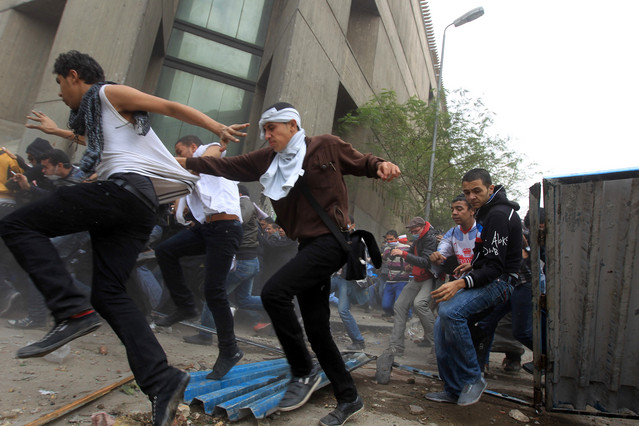What happened a year ago outside the Cabinet Office?
On 16 December, it will be a year since soldiers tried to forcibly disperse a three-week-old peaceful sit-in outside the Cabinet Office in central Cairo. Five days of clashes followed, during which 17 protesters were killed and nearly 1,000 injured. Each day this week we bring you the story of one of the victims and a recommendation to the authorities.
Case #2 – protesters killed
On 16 December, Ahmed Mohamed Mansour Alkotb, a 21-year-old media student and member of the 6 April Youth Movement, met his cousin at around 4pm just off Tahrir Square. Military forces and men in plain clothes were throwing objects and Molotov cocktails from the parliament’s annex buildings onto protesters. Protesters were throwing stones back but they could not reach them.
The cousins reached Magless El-Shaab Street at around 4.30pm. The army shot live ammunition at them. Ahmed’s cousin saw a man being hit and carried away by others. He ran to safety. He later learned that the man was his cousin, Ahmed Mohamed Mansour Alkotb. He was shot in the head and had died.
Amnesty International’s recommendation #2
In order to deal with this legacy of human rights abuses, the Egyptian authorities should, among other things:
- Ensure that security forces and any other state agencies that exercise law enforcement functions comply with international standards, by giving clear instructions that force may only be used when strictly necessary and only to the extent required for performance of their duty, and that lethal force may only be used when strictly unavoidable in order to protect their lives or the lives of others.
Amnesty International is a global movement of more than three million supporters, members and activists in over 150 countries and territories who campaign to end grave abuses of human rights.
Read Amnesty’s report on abuses committed by Egypt’s military.
Read case #1 of Daily News Egypt’s Cabinet Office case files.




